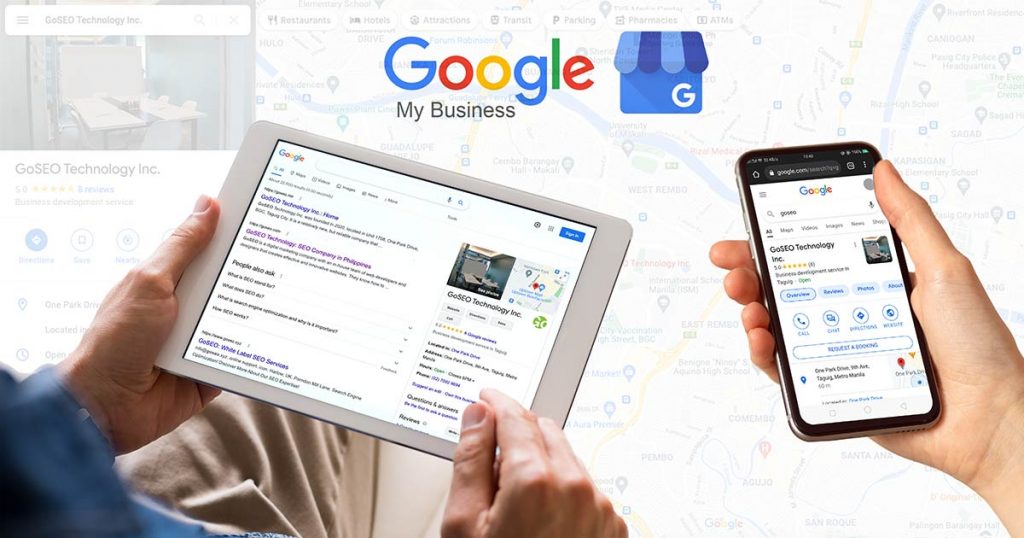Before the pandemic exploded and locked every one of us in our homes, gaining new clients for a legal practice meant attending legal proceedings, client meetings, and court hearings. On top of that, you need to sacrifice time for marketing, research, writing, supporting your staff, and running your legal firm.
In other words, you need to be like Superman. You have to do everything efficiently and quickly, traveling from time to time to do your legal work.
Fortunately, today in the 21st century, legal firms can connect with potential clients in different ways. One of them is the organization of your business in Google My Business, which gives you the opportunity to attract new clients and increase the number of people who trust you.
What is Google My Business?
Google My Business is a local service that allows users to leave ratings and reviews for services they provide in their area.
People search Google Maps for local businesses, services, and products. Based on their location, Google Maps will pull business information from the Google My Business database.
When a user clicks on your name or address, they will see your business contact information, photos of the actual office space you occupy, maps with directions to get to your place of business, and more.
For instance, Mark owns Mark’s Law Office specializing in obtaining driver’s licenses for immigrants. He started his work in Google My Business service after getting a positive review from one of his clients in Oregon. The client referred Mark to other immigrants in her neighborhood, who also made good use of Mark’s services.
Google My Business serves as a bridge to potential clients and makes it easier to acquire new ones.
Why do lawyers or other legal business owners need to use Google My Business?
Google My Business has quite an impact on your practice. Here are some other reasons why you need to stay active in GMB:
• Reach potential clients wherever they are. Due to the advancement of technology, most people now search for companies and services online rather than going out and asking people around them. In fact, more than 70% of people look for businesses on their mobile devices, which means you will be able to reach a wide range of audiences even when they are on the go.
• Provide your customers with useful information. Google My Business has a helpful feature called Maps for Business. Available on the latest version of Google Maps, this service allows users to find businesses and services that they need by taking pictures or typing in their location. This feature allows your legal practice to connect with potential clients and provide them with valuable information.
• Hype your business. The more information users can obtain from your Google My Business page, the more potential clients you attract. Consumers have the tendency to trust businesses that have a presence on Google Maps. Being active in GMB is an excellent way to enhance your law firm’s reputation and promote it to new clientele.
How to Set Up Google My Business?
You can set up your Google My Business location by going to the official website of Google My Business and entering all the relevant information such as business name, address, phone number, and the categories you fit into.
You can now edit or update your information or photos by clicking on your name/address in the list of locations that appear when a user writes a local search.
You’ll have to log out of the Google Maps service if you have an account, but Google uses an option under Settings for this purpose.
Before you do so, however, it is important to think about the following things:
1. The business name must be local-friendly.
2. A URL is suggested as a good website address for your business.
3. Your “About” information should include detailed information about the people who work in your office, their qualifications, services provided, and hours of operation.
4. Make sure that the name of your business fits both with your chosen category and your chosen location.
5. Write the full name of the street where your office is located on Google Maps.
6. If you have a physical office, use signage outside or on your door.
7. Your telephone number should be listed if you have one, but many people prefer to use their cellphones as contact numbers.
8. Set your hours of operation.
9. Choose pictures of your office that are appropriate for the services you provide.
10. Finally, click Save for each Google My Business page that you want to edit or publish. You will need to do this for each office or service you have set up on Google Maps, even if it is already listed under another company name or entity named in the same directory.
If you want others to find you online, it’s essential to be active on as many social media sites as possible.
Today, over 70% of people research companies and services on their smartphones. In fact, most consumers now search for businesses online before going out and talking to people around them about a particular company or service. In this way, you can reach your audience wherever they are and provide them with useful information about your business.
Google My Business has a useful feature that allows users to take pictures of the business address or sign.
You can then use these photos as a logo or as a thumbnail on a website. Even more, people trust companies with a presence on Google Maps, so being active on GMB is an intelligent approach to enhance the reputation of your legal practice and promote it to new clientele.
Get in Touch
Do you find this article helpful? For more information or questions, click the button to send us a message.
If you have any comments or suggestions, feel free to share them with us, too!

